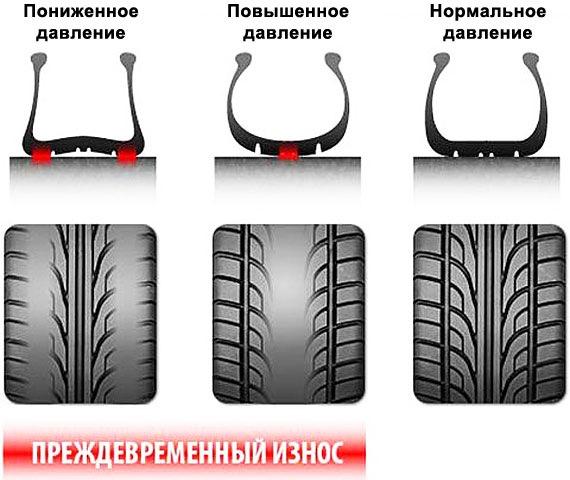
Correct tire pressure. What does it affect?
 Drivers are accustomed to checking the condition of their tires before winter. But tires should also be checked when it gets warm. The main problem is actually tire pressure.
Drivers are accustomed to checking the condition of their tires before winter. But tires should also be checked when it gets warm. The main problem is actually tire pressure.
The period of replacing winter tires with summer tires has just begun. Studies show that more than 70 percent of drivers use seasonal replacement tires. At the same time, relatively few users care about the proper technical condition of their tires.
Many drivers have two sets of tires for several years - winter and summer - and change them depending on the season of the year. Reaching for tires from last season, you need to check not only the presence of damage on them, but also their age. As for the year of manufacture of the tire, a sequence of four digits on its sidewall will help, where the first two are the week, and the last two are the year of manufacture. Due to the properties of the materials the tire is made from, tires cannot be used for more than six years.
One of the key issues when deciding whether to continue using a winter tire is tread depth. Its statutory minimum height is 1,6 mm.
 Of course, damage such as tread peeling, sidewall bulges, scuffs and cuts, or a bare bead excludes the tire from further use.
Of course, damage such as tread peeling, sidewall bulges, scuffs and cuts, or a bare bead excludes the tire from further use.
The technical condition of the tire is affected by the way the car is used, i.e., the annual mileage, the quality of the roads on which the car drives, driving technique, and the level of tire pressure. While the first three indicators of tire wear are fairly well known, drivers are not yet well aware of the impact of pressure. Meanwhile, the level of tire pressure is important not only for their technical condition, but also for traffic safety.
– Increased braking distance of a car with depressurized tires. For example, at a speed of 70 km/h, it increases by 5 meters, explains Radosław Jaskulski, instructor at Skoda Auto Szkoła.
On the other hand, too much pressure means less contact between the tire and the road, which affects the car's oversteer. Road grip is also deteriorating. And if there is a loss of pressure in a wheel or wheels on one side of the car, we can expect the car to "pull" to that side.
In addition, too high a pressure also causes deterioration of damping functions, which leads to a decrease in driving comfort and contributes to faster wear of the vehicle's suspension components.
Incorrect tire pressure also leads to an increase in the cost of operating a car. For example, a car with a tire pressure that is 0,6 bar below the nominal pressure will consume an average of 4 percent. more fuel, and the life of under-inflated tires can be reduced by as much as 45 percent.
Therefore, experts advise checking tire pressure at least once a month and always before a long trip. This should be done when the tires are cold, i.e. before or shortly after driving.
For safety reasons, manufacturers began introducing a tire pressure monitoring system into their cars about a decade ago. Initially, the idea was to notify the driver of a sudden drop in tire pressure, such as the result of a puncture. However, the whole system was quickly expanded to also inform about the drop in tire pressure above the required level. Since 2014, every new car sold in the EU markets must have a tire pressure monitoring system.
In vehicles of medium and compact class, for example, in Skoda models, the so-called indirect pressure control system TPMS (Tire Pressure Monitoring System). For measurements, wheel speed sensors used in ABS and ESC systems are used. Tire pressure levels are calculated either from vibration or from wheel rotation.
The correct tire pressure for this vehicle is indicated in the owner's manual. For the convenience of the driver in most cars, such information is displayed in a conspicuous place on one of the body elements. For example, in the Skoda Octavia, pressure values are stored under the gas tank flap.
Radosław Jaskulski from Skoda Auto Szkoła reminds that it is also necessary to check the air pressure in the spare tire.
“You never know when and under what circumstances you will need a spare tire. If the car is equipped with a temporary spare tire, you should remember that it is more sensitive to road irregularities and you should maintain the appropriate speed indicated in the car's operating manual, the instructor notes.
